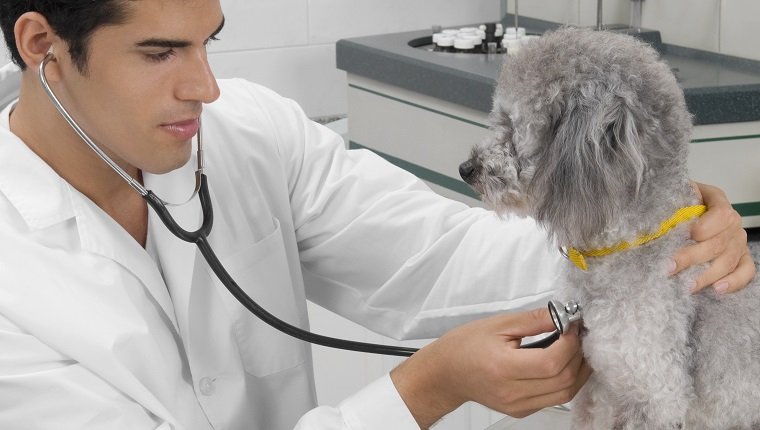Pulmonary hypertension in dogs happens when there’s higher than normal blood pressure in the arteries and capillaries of the lungs. This can occur when dogs’ arteries start to narrow, become obstructed, or receive too much blood flow.
Pulmonary hypertension can cause parts of the heart to become enlarged or function abnormally, which results in less oxygenated blood being pumped through dogs’ bodies.
Symptoms may include difficulty breathing, bluish skin, and exercise intolerance. Eventually, blood may start to pool in the body, and dogs can suffer from congestive heart failure.
If you see the signs of hypertension in your dog, then you must consult a veterinarian for a proper diagnosis and treatment. Here’s what you should know about the symptoms, causes, and treatments for pulmonary hypertension in dogs.
Symptoms Of Pulmonary Hypertension In Dogs

The symptoms of pulmonary hypertension in dogs arise when the blood doesn’t deliver enough oxygen from the lungs to the rest of the body. If it goes untreated, it can be fatal.
Here are a few signs that a dog might be suffering from pulmonary hypertension:
- Difficulty breathing
- Exercise intolerance
- Coughing
- Spitting up blood
- Bluish or purplish skin
- Enlarged abdomen
- Distended veins in the neck
- Heart murmur
- Weight loss
- Fatigue
- Fainting
- Sudden death
Causes Of Pulmonary Hypertension In Dogs

There are several possible causes of pulmonary hypertension in dogs. Conditions that affect the lungs, heart, or blood can all lead to hypertension. It’s important to get a vet’s diagnosis so they can treat the underlying condition.
Here are a few possible causes of pulmonary hypertension in dogs:
- Blood vessel obstruction
- Pneumonia
- Bronchitis
- Cancer
- Adult respiratory distress syndrome
- Adrenal gland problems
- Kidney disease
- Pancreatic inflammation
- Immune-mediated diseases
- Heart disease
- Heartworm
- Infections
- Obesity
- Living at high altitudes
Treatments For Pulmonary Hypertension In Dogs

Treatment for pulmonary hypertension in dogs depends on how severe the condition is and what’s causing it.
If a dog is having severe breathing difficulties, a vet may hospitalize them and give oxygen therapy, as well as medication to make breathing passages dilate to allow more air to pass through. Other drugs may help remove fluid from the lungs or treat congestive heart failure.
Once symptoms are under control, care should continue at home. This includes keeping dogs in a stress-free environment and reducing physical pressure.
Dogs with pulmonary hypertension should avoid extreme cold or heat, as well as dry air, secondhand smoke, and high altitudes. Activity might need to be restricted, and a low sodium diet may be prescribed.
If a vet finds underlying causes, then those may need to be treated, as well. Treatment for infections may include antibiotics or other drugs. Diseases of the kidneys, heart, adrenal glands, and immune system will require strict monitoring and care. Heartworm and some forms of cancer may need further surgical treatment.
Dogs will also need follow-up vet exams to keep an eye on blood pressure and make sure the heart functions properly. Damage to the heart or lungs may be irreversible, and treatment may focus more on making dogs comfortable, rather than curing them.
Does your dog have pulmonary hypertension? How do you keep symptoms under control? Let us know in the comments below!









